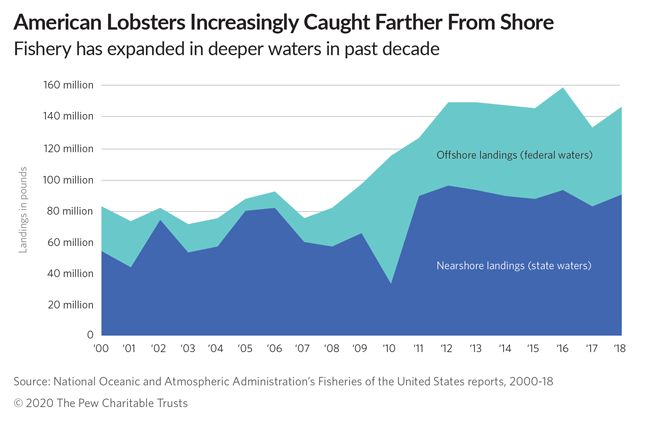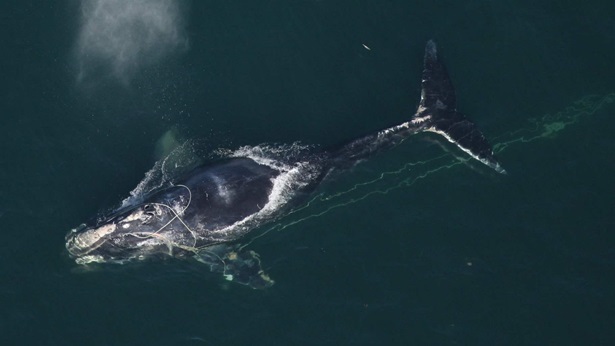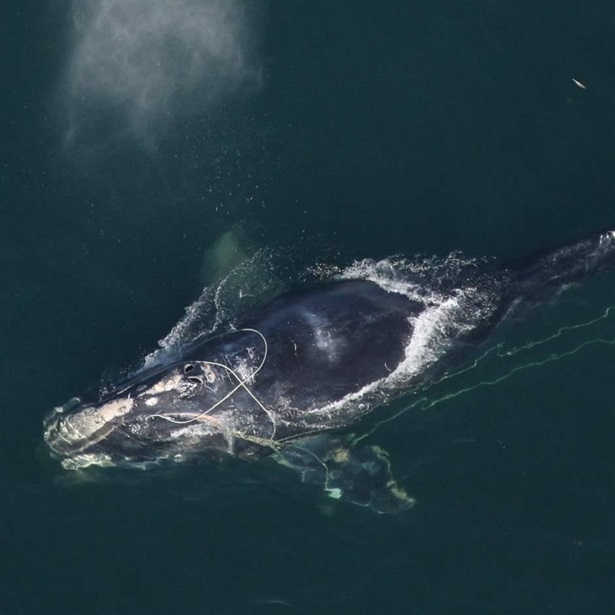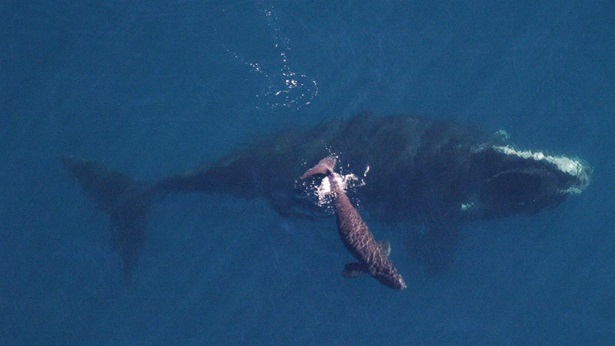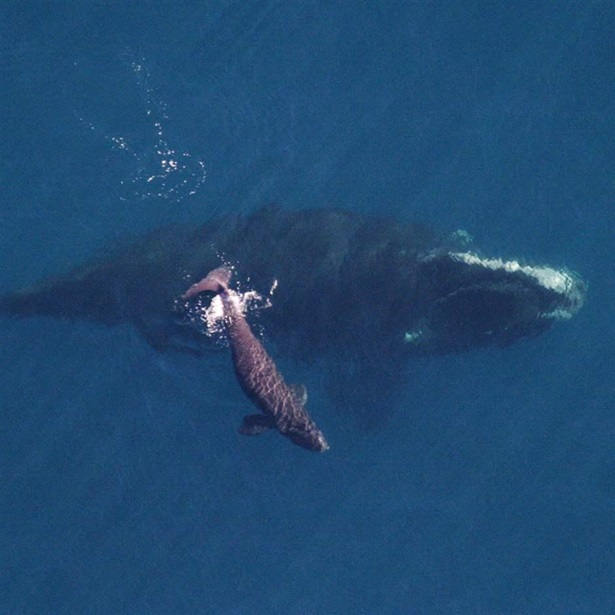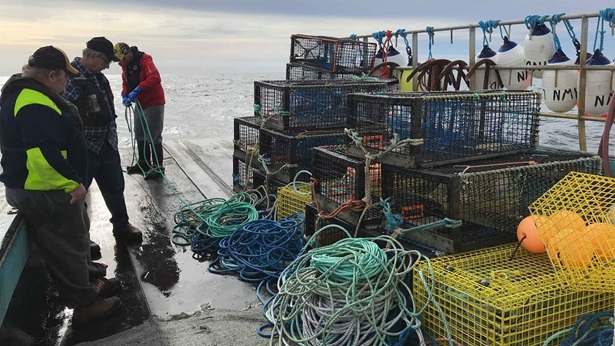Flawed NOAA Proposal Too Weak to Help Endangered Right Whales
Public should urge federal government to take emergency action to save species from extinction
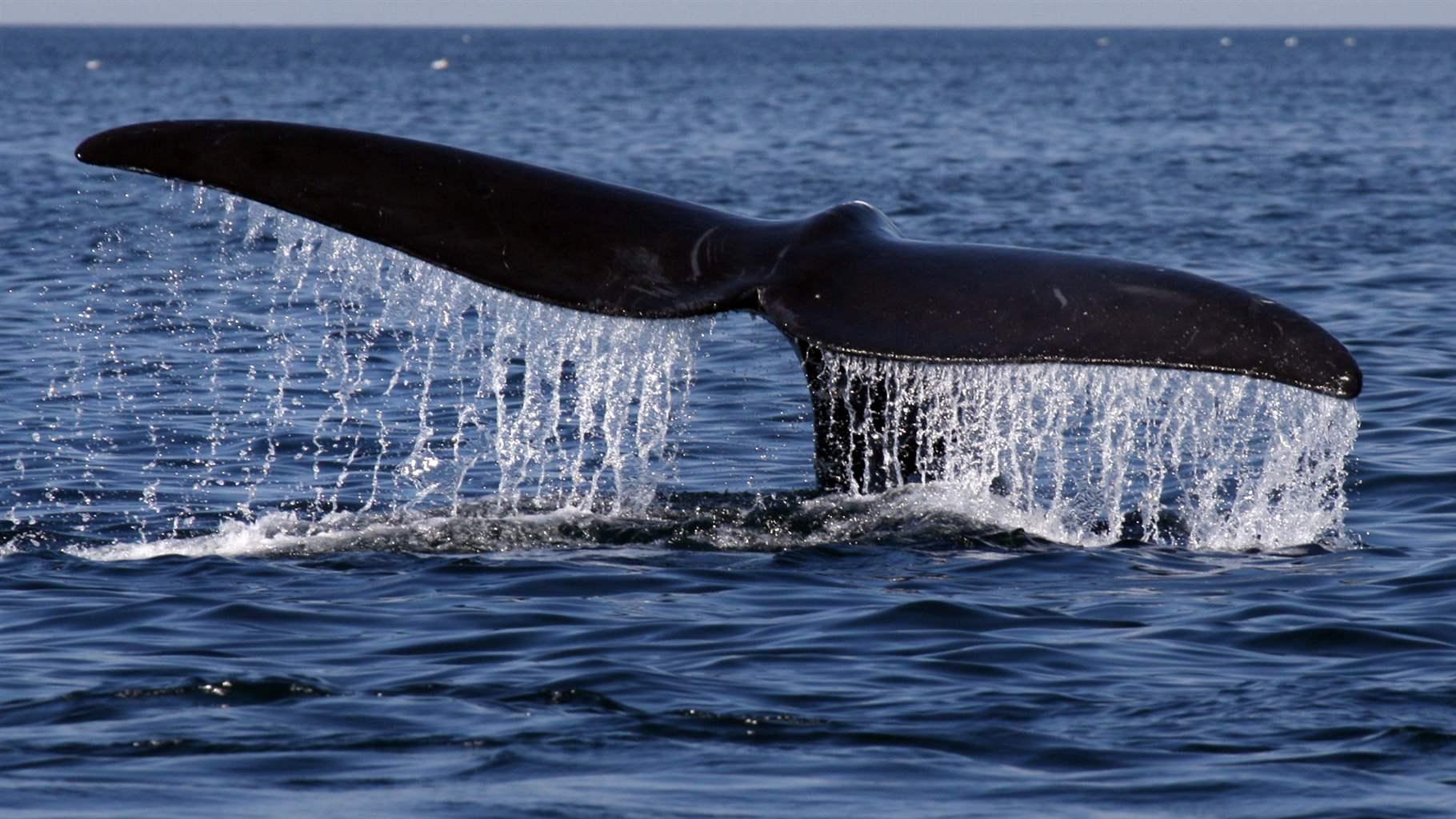
On the last day of 2020, the National Oceanic and Atmospheric Administration (NOAA)—the agency responsible for protecting whales in U.S. waters—released a proposed regulation to protect right whales from entanglement in fishing gear, a leading cause of death for the highly endangered mammal. NOAA hasn’t issued a rule to protect right whales since 2014, and, as the graph below shows, the right whale population has fallen dramatically since then.
In October, NOAA announced preliminary scientific findings indicating that the North Atlantic right whale population was faring even worse than previous estimates suggested, increasing the urgency of ending unnecessary deaths and serious injuries from entanglement in commercial trap and pot fishing gear. And a recent scientific publication provided evidence that entanglement-related deaths are severely underestimated, with entanglement nearly twice as likely to be the cause of unobserved deaths of right whales—known as “cryptic mortality”—as it is for documented deaths.
But unfortunately, the proposed regulation does not take into account the latest science. As a result, the measure cannot achieve the level of protection these whales need to survive—and avoid extinction. And even if the proposed rule was based on the best available science, measures would not take effect on the water until 2022 under the federal rulemaking timeline—a delay the species cannot afford.
That is why the federal government should take emergency action right now to close the highest-risk areas to the fixed lobster and crab pot lines involved in most of the entanglements, which would protect right whales until regulations are in place. In June, The Pew Charitable Trusts petitioned NOAA and the Department of Commerce to do just that, and we cited sound science in outlining the areas that should be closed. In January, as the Biden administration took office, we also wrote a letter to the new leaders in the Commerce Department and NOAA explaining why emergency action is needed now more than ever.
Importantly, the vast majority of the areas that should be closed when right whales are likely to be present are in offshore waters, where lobster gear is heavier, stronger, and more deadly for right whales that become entangled in it. These closures would not affect the livelihoods of most lobster fishermen. As the graph below shows, the offshore lobster and Jonah crab fishery—not the inshore, small-scale, day boat lobster fishery that is often the face of the industry—has expanded dramatically in recent years, just as entanglements and right whale deaths have increased.
NOAA is now accepting public comments on the proposed regulation to protect right whales—a rare opportunity for people to speak up for one of the rarest of our country’s whales. We know that, given the chance, right whales can recover. Just this year, scientists have documented 15 new calves, some of them born to first-time mothers. But the population will not increase if deaths continue to exceed births, which is why effective protections are needed now.
Peter Baker is the director and Katharine Deuel is a senior officer with Pew’s project to protect Atlantic Ocean marine life off the U.S. and Canada.
